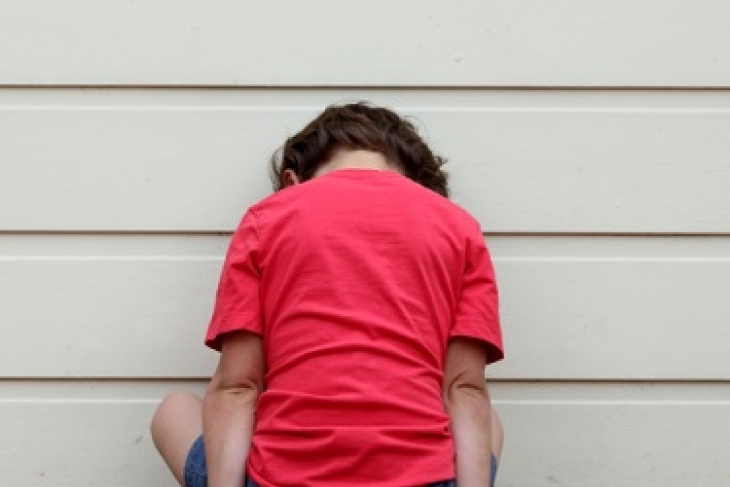It’s difficult to get your arms around the idea of suspending a three- or four-year-old from preschool. For most of us (if we’re even able to remember back that far), pre-K discipline basically meant quiet time in the corner, miserably sulking while our friends laughed and colored. Sending a child away from class, whether for a few hours or a few days, just seems disproportionate to the level of mischief we’d expect from one so young. That cognitive dissonance perhaps accounts the tone of disbelief in Melinda Anderson’s recent Atlantic article on the subject. Tallying a spate of seemingly frivolous dismissals for offenses like potty accidents and inconsolable crying—fairly common occurrences among the juicebox set, we can probably agree—she warns that “toddlers are racking up punishments that leave many parents and child experts bewildered.”
She’s not wrong. More and more commentators are wondering what transgression could possibly warrant suspension for pupils still sporting pull-ups. The key evidence in Anderson’s own piece is the story of Tunette Powell, a mother of two sons who were suspended from their preschool a combined eight times. Powell originally wrote about her experiences in a widely discussed Washington Post piece touching on some of the same issues that have colored the discipline wars more generally: At both the pre-K and K–12 levels, suspended students are more likely to be boys, and more likely to be black, than overall enrollment numbers would lead us to suspect. And the effects of these suspensions are too-often correlated with troubling outcomes later in life—consider the infamous “school-to-prison pipeline.” But for Anderson, “more astounding” than the discipline statistics for older students were “the thousands of the nation’s youngest learners—nearly 8,000 preschoolers—suspended from school in” the 2011–12 school year.
Well, hold on a second. Are we really prepared to call that number “astounding”? When you’re dealing with a policy sector as enormous as American schools, you get used to dealing with quantities in the millions (the number of students nationwide), the billions (the number of dollars dedicated to educating those students), or the trillions (the number of times you bang your head against the wall after another cynic compares charter schools to gangland killings). But we don’t measure much in the thousands.
Although it’s tough to conceive of legions of tiny miscreants needing to be removed from classrooms, this country actually boasts a great many preschoolers of all sorts. According to data from the National Institute for Early Education Research, roughly 1.3 million three- and four-year-olds were enrolled in state pre-K programs during that same 2011–12 school year. (Keep in mind, too, that this survey didn’t include Head Start or private preschool, so the number of total U.S. preschoolers is actually higher.) A little back-of-the-envelope math informs me that our eight thousand suspended students amounts to not quite 0.6 percent of that total. Pre-K class size varies by state, but let’s assume a standard of, say, twenty-five students. That rate of suspension will result in approximately one-seventh of one child suspended per classroom, per year. There is certainly something “astounding” about that figure—I had no idea we had fractional kids running around causing problems for everybody—but I’m not sure it’s what Anderson had in mind.
In the words of political humorist and former teacher Bob Somerby, referring back to Tunette Powell’s account: “Her two preschoolers got suspended eight times in one year? Based on the data in Anderson's source, that experience isn't just an anomaly. It seems to border on the statistically impossible.”
None of this necessarily says much about the wisdom of separating tiny, growing minds from their teachers. A part of me believes that we’re becoming too quick to banish kids for infractions that, in decades past, would have only carried in-class (or at least in-school) punishments. And apart from the lousy effects that suspension can breed—students alienation and delinquency, as well as lost instructional time that’s increasingly difficult to make up—we might wonder exactly what lessons kids with behavioral difficulties stand to learn from getting sent home for the day. This goes double for preschoolers, who can hardly be expected to understand the consequences of their actions.
On the other hand, we all know the costs of a lax disciplinary culture in schools: Teachers are harried from dedicating the bulk of their mental resources to mollifying one or two disruptive students, and the rest of the children are left to fend for themselves. Preschoolers who bite, kick, or scream uncontrollably may well be endangering their classmates’ learning as well as their own. Veteran pre-K teachers and administrators who resort to suspension feel that they do so with good reason, and the numbers suggest that they do so very sparingly.
These are serious quandaries, and we don’t have to come up with a solution to them right away. But we should be aware of the actual rate of pre-K suspensions: a trickle, not a deluge.

